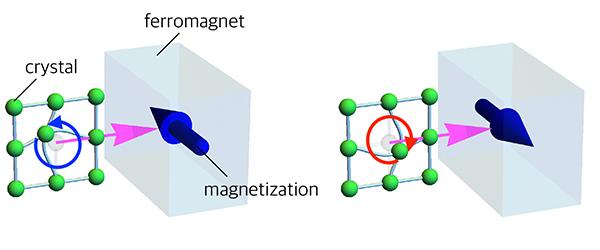
Credit: Tohoku University
Using the circular vibration of surface acoustic waves, a collaborative research group have successfully controlled the magnetization of a ferromagnetic thin film.
Their research was published in the journal Nature Communications on May 10, 2021.
Essentially, acoustic waves are waves of atomic vibrations in a substance. When the waves propagate across the surface of a material, the vibration becomes circular. This circular motion, known as angular momentum, can help measure rotational motion.
Surface acoustic waves are utilized in bandpass filters in cell phones. The bandpass allows certain frequencies in and keeps unneeded frequencies out. However, storage devices in computers are composed of ferromagnets.
“We wondered whether the surface acoustic waves could control another form of angular momentum: an electron’s spin – the source of magnetism,” said, coauthor of the study Ryo Sasaki, a graduate student at the University of Tokyo and concurrently a special research student at Tohoku University.
Sasaki worked alongside Yoichi Nii and Yoshinori Ononse, assistant and full professor at Tohoku University’s Institute of Materials Research.
Together, they were able to control the magnetization of a ferromagnetic thin film using the angular momentum transfer from surface acoustic wave to ferromagnetic spin moments.
Our discovery opens up new avenues for combining and developing acoustic and magnetic devices,” added Sasaki.
###
Media Contact
Yoshinori Onose
[email protected]
Original Source
https:/
Related Journal Article
http://dx.




